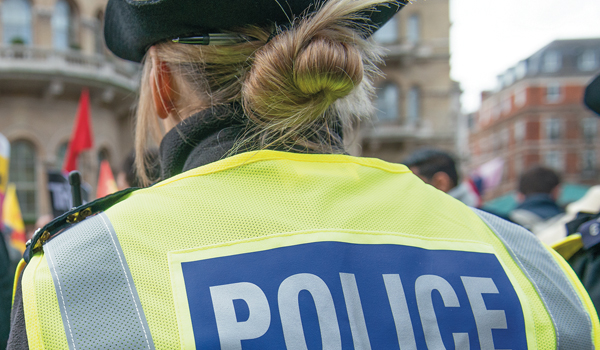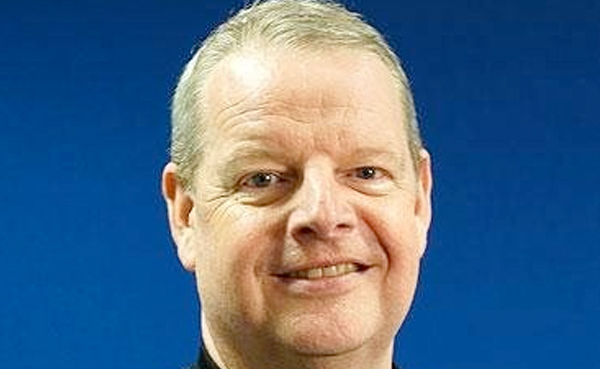Misogyny in policing
Emma Cunningham explores how some male officers abuse their power over female victims and colleagues.
The case of David Carrick, a serial rapist and a serving officer in the Metropolitan Police Service, is the latest shocking example of violence against women committed by the police.
For years, I have studied misogyny in policing in England in Wales. I have crunched the numbers when it comes to acts of misconduct by men and women in the force. I have conducted in-depth interviews with policewomen who suffered years of misogynistic bullying at the hands of their male colleagues.
While it is not exactly surprising that policing has long had a misogyny problem, my research shows how this problem appears in policing day to day.
Historically, policing was a job for men. As I explore in my book Women in Policing, the initial 19th-century arguments in favour of allowing women to join focused on their difference from men. Supposedly feminine “moral and maternal” traits were seen as evidence that women could provide protection to female victims, offenders and juveniles.
A toxic, patriarchal culture has persisted throughout policing history. This is true in the experiences of both women officers, and women who interact with the police as victims or perpetrators of crimes.
One area where this can be seen is in misconduct by officers. Using Freedom of Information requests, I investigated whether male and female officers committed similar numbers and types of misconduct offences.
I examined records of offences and misdeeds committed by male and female officers in three forces, from 2007 to 2012. Most of those involving both male and female officers involved minor driving offences, like using a windscreen wiper from a police car on their own vehicle or claiming garage points to fill up police vehicles.
The sharing of inappropriate images via the force email system was another offence that both men and women committed. The most serious incident of misconduct during this five-year period involved both a male and female officer. It was a single case of “lack of duty resulting in a death in custody”.
Overall, many more male officers were reported for violations than their female colleagues – up to seven times more, depending on the type of offence. Yet at the time, the ratio of men to women in the force was closer to five to one. Men were also more involved in offences related to abuse of authority and misuse of force.
One crucial difference in offences by male and female officers shows how misconduct, power and misogyny can work together in police forces. Where there were offences of beginning inappropriate relationships with vulnerable survivors of domestic abuse or sexual assault, the officers involved were all male.
I did not find any examples of female officers doing the same. I also found only male officers had been involved in offences of domestic violence, abuse and sexual harassment.
The disciplinary data, combined with insights from my interviews with female officers, led me to conclude that the policing environment enables men to combine the power of masculinity (which they have from living in a patriarchal society) with their power as police officers and behave this way. Policewomen, even with their authority as officers, do not have the same kind of power.
Women in policing
My research with women officers also shows the extent of misogyny within force culture. My colleague and I spoke with 23 women who had, between them, four decades of policing careers in different areas in England and Wales.
All of these women entered the force because they wanted to help victims and survivors of crime find justice. Their desire to do this was not diminished in the face of sexual harassment, bullying and intimidation they received from male colleagues.
One officer said she had been invited to a strip club after work with her male peers. Another described the misogynistic labels her male peers used to talk about women.
Others told us of male supervisors who insisted policewomen wear pencil skirts on parade, or suggested their uniform informed their sexuality. One participant said her supervisor had noticed that she cut her hair short and was wearing a men’s tie, and asked whether she was a lesbian, suggesting that women’s uniforms were tied to their sexual identity and appeal.
Even the recent addition of bodycam equipment, the women told us, was not a good fit for many female officers’ bodies and often pointed towards the floor as a result.
In one disturbing example, an officer told us that while she was pregnant, her male colleague took a picture of her from her drawer at work, pasted her face onto pictures of an overweight woman’s body, photocopied them and sent them to her anonymously.
This case, like many of those shared by our participants, did not go through formal misconduct mechanisms. Instead, it was dealt with by supervisors who requested an apology from the perpetrator but did not discipline him further.
Institutional misogyny
Any instances of police officers engaging in this kind of behaviour should have been ringing alarm bells about a pattern of misogyny within the institution. But as recent events show, if alarms have rung, they have not been responded to appropriately.
The scandals of the past few years – Carrick, Wayne Couzens, Charing Cross, Bibaa Henry and Nicole Smallman – show that policing is still plagued by a misogynistic, hypermasculine culture. While legal efforts like the Centre for Women’s Justice 2019 super-complaint against the police have attempted to hold police organisations to account for violence against women, the culture within forces does not appear to have changed.
Police responses calling predatory police perpetrators of violence against women and girls as “unspeakably evil” suggests they are rare events. But while shocking, they aren’t uncommon – they are part of a long, systemic pattern of misogyny.
Emma Cunningham is a senior lecturer in criminology at the University of East London. Originally published on The Conversation https://theconversation.com/misogyny-in-policing-how-some-male-officers-abuse-their-power-over-female-victims-and-colleagues-199551



